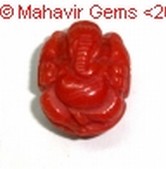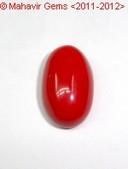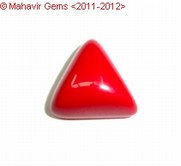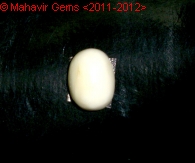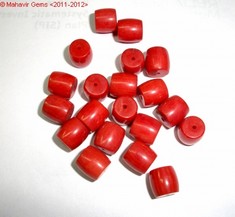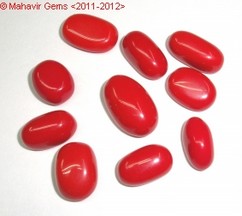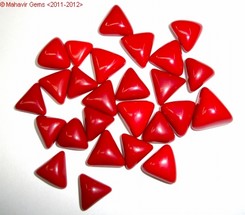








Copyright 2009-2014 Mahavir Gems. All Rights Reserved.
MAHAVIR GEMS

This site is best viewed on 1024 x 768 screen resolution using Mozilla 3.5 Browser
Gemstone
|
Coral
|
Species
|
Precious / Noble Coral, Black Coral
|
All Rights Reserved with Mahavir Gems. Do not reproduce the content without the consent of Mahavir Gems.
|
|||||
Colour:-
|
Red, Pink, White, Black,Blue.
|
Moh's Hardness
|
3 - 4
|
Transparency
|
Translucent to Oaque
|
Refractive Index
|
1.486 - 1.658
|
Double Refraction:-
|
-0.160 to -0.172
|
Density / Specific Gravity
|
2.60 - 2.70
|
Crystal System
|
Trigonal (Microcrystalline)
|
Chemical Composition
|
CaCO3
|
Fluorescence
|
Weak : Violet
|
Deposits
|
Along the coast of Western Meditaranean countries, the Red Sea, Bay of Biscay, Canary Islands, Malayasian Archipelago, the Midway Islands, Japan & Hawaii (U.S.)
|
||||
Legends
|
The Romans believed coral could protect children from harm, as well as cure wounds made by snakes and scorpions and diagnose diseases by changing colour.
|
||||
Extra
|
At the beginning of the Christian era, there was a great trade carried on in coral between the Mediterranean and India, where it was highly esteemed as a substance endowed with mysterious sacred properties.
|
||||
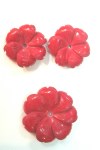 |
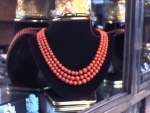 |
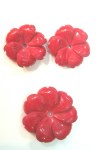 |
Precious coral or Noble coral or Red Coral is the common name given to "Corallium rubrum" and several other related coloured species of marine coral. The distinguishing characteristic of precious corals is their durable and intensely colored red or pink skeleton, which is used for making artistic beautifull jewelry. People believed coral to be a plant until the 18th century, when William Herschel used a microscope to establish that coral had the characteristic thin cell membranes of an animal.
Corals are highly sensitive to environmental changes. Scientists have predicted over 50% of the world's coral reefs may be destroyed by 2030. Red corals grow on rocky seabottom with low sedimentation, typically in dark environments—either in the depths or in dark caverns or crevices. The original species, "Corallium rubrum", is found mainly in the Mediterranean Sea. It grows at depths from -10 to -300 mt, although the shallower of these habitats have been largely depleted by harvesting. The hard skeleton of red coral branches is naturally matte, but can be polished to a glassy shine. It exhibits a range of warm reddish pink colors from pale pink to deep red; the word coral is also used to name such colors. Owing to its intense and permanent coloration and glossiness, precious coral skeletons have been harvested since antiquity for decorative use.
Coral jewelry has been found in ancient Egyptian and prehistoric European burials, and continues to be made to the present day. In common, red corals have the shape of small leafless bushes and grow up to a meter in height.
Their valuable skeleton is composed of intermeshed spicules of hard calcium carbonate, colored in shades of red by carotenoid pigments. In living specimens, the skeletal branches are overlaid with soft bright red integument, from which numerous retractable white polyps protrude.
The polyps exhibit octameric radial symmetry.
Comments:-
- The two biogenic precious gemstones, coral and pearl, although drastically different in appearance, are chemically very similar. Both are mostly calcium carbonate deposited by marine invertebrates.
- Another unrelated species, the Hawaiian black coral is sometimes used as an ornamental material. Its skeleton is not mineralized, consisting mostly of conchiolin.
- In Hindu astrology red coral is associated with the planet Mars or Graha-Mangala and used for pleasing Mars. It should be worn in the ring finger.
